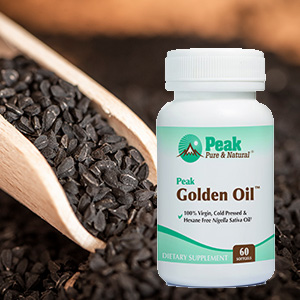Get Easy Health Digest™ in your inbox and don’t miss a thing when you subscribe today. Plus, get the free bonus report, Mother Nature’s Tips, Tricks and Remedies for Cholesterol, Blood Pressure & Blood Sugar as my way of saying welcome to the community!
How to make a homemade face mask using CDC guidelines

During the initial stages of the coronavirus outbreak in the U.S., officials stuck solidly to the recommendation to skip face masks unless you were either sick yourself or caring for someone with the illness.
But, that has all changed…
Now, not only are cities across the nation beginning to require face coverings in public (and even penalizing those who flout the rules with fines of up to $1,000), the experts at the CDC themselves have recommended masks for all.
However, for many, that recommendation is easier said than done.
After all, the N95 masks that have been touted for COVID-19 prevention have been impossible to come by since the early days of the pandemic that has rocked the world. And, even if you can find them, officials still warn that those masks are better saved for healthcare workers on the front lines of the crisis, whose risk of exposure is off the charts.
So, that leaves you with only a few choices…
If you can find surgical masks (another big if right now considering how many people have rushed to do the same), they may provide at least some protection. You can also consider purchasing premade cloth masks since some companies have started to take advantage of the growing market. Yet, wait times can be long since supplies are limited.
Or, you can choose to make your own mask at home, with supplies you’re likely to have on hand…
With that in mind, I wanted to give you a quick guide on the easiest way to creating a homemade face mask, based on CDC guidelines.
And luckily, I had expert help, since my mother has been busy making masks for our family, neighbors, friends, and others in our community over the past weeks.
Mask making 101
First, it’s important to remember that mask making can be done without a trip to the store (where not already having a mask can lead to exposure).
In fact, some of the best fabrics for making a mask are found in a cotton t-shirt, pillowcase, or old flannel pajamas that you no longer need. My mom has used all of these as well as extra cotton material she had stored for future projects in order to craft numerous masks.
One way to decide whether a fabric is good for making a mask is to hold it up to the light. The less light you see through it, the better it is – although you still need to be able to breathe through it.
Related: How to prevent skin damage wearing a mask during the pandemic
The key is that for each mask, you’ll want to create multiple layers in order to best filter the germs you come in contact with. And, if you can make a mask with a pocket that allows for a filter to be inserted (a coffee filter is the CDC’s recommendation), even better!
You’ll also need:
- Wire to tighten the mask around your nose – My mom has used paper clips, floral wire, and even pipe cleaners for this purpose.
- Material for ear straps – This can be the elastic you use in sewing, rubber bands, string, hairbands, or simple cloth strips
According to tests by Wake Forest scientists, one of the most effective masks you can make is one with a layer of cotton on the outside and a layer of flannel on the inside.
Patterns to use
Of course, if you’re like me (rather than my mom) and aren’t crafty or an experienced sewer, you’ll probably be wondering what pattern to use to create your homemade mask.
And, here are a few excellent options.
First, the CDC themselves have created tutorials for both no-sew masks and ones made with a sewing machine.
Peak Golden Oil™
The powerful immune-modulating properties of Peak Golden Oil™ support a healthy immune system and your body’s ability to self-heal.
I also love this video in which the Surgeon General demonstrates how to make a mask using a t-shirt and rubber bands in less than a minute.
One other option is a printable pattern with step-by-step instructions in The Washington Post that makes sewing a mask easy, even for those of us who would consider ourselves “sewing machine novices.”
Wearing and washing your face mask
It’s important to remember that once you’ve made your mask, you should wear it any time you’ll be in contact with people outside your household (or in your home if a family member is sick).
While wearing, be sure not to touch your eyes, nose, or mouth – which can spread coronavirus – and to remove the mask by touching the straps only, not the front of the mask itself.
Once you’ve taken off the mask, you should toss it into your washing machine on hot and immediately wash your hands for at least 20 seconds, preferably 30.
It’s likely that the need to wear masks in public won’t go away anytime soon, so start on yours today and stay safe out there.
Sources:
Answers to your DIY face mask questions, including what material you should use — Washington Post
A User’s Guide to Face Masks — The New York Times
What You Should Know Before Making a Homemade Mask, According to the CDC — NBC Chicago













